
iPhone photography has gotten better and better, to the point where I now happily use it as my primary camera. There are, though, some areas where a dedicated camera still gives significantly better results, and long exposure photos is one of those.
Spectre is an iPhone app which aims to close that gap, performing photo-stacking trickery to simulate photos with exposures of up to 30 seconds …
Long exposure photos: What and why
Most photos use a very short shutter speed – the time the sensor is exposed to the light, and therefore the duration of time captured in a photo. This would normally be at least 1/60th of a second, and typically much faster than this.
That’s generally a good thing. A still photo aims to capture a single moment in time, so you need to freeze any movement, without any motion blur. A short exposure allows you to do this.
But there are times when you want the opposite – that is, to capture blurred movement. Moving water is a common case in point, and I illustrated this in one of my iPhone Diary pieces.
Compare these two shots to see the difference that makes – iPhone 11 Pro with its 1/20th-second exposure on the left, Sony a6300 with 30-second exposure on the right. Both were taken within a minute or so using the same tripod.
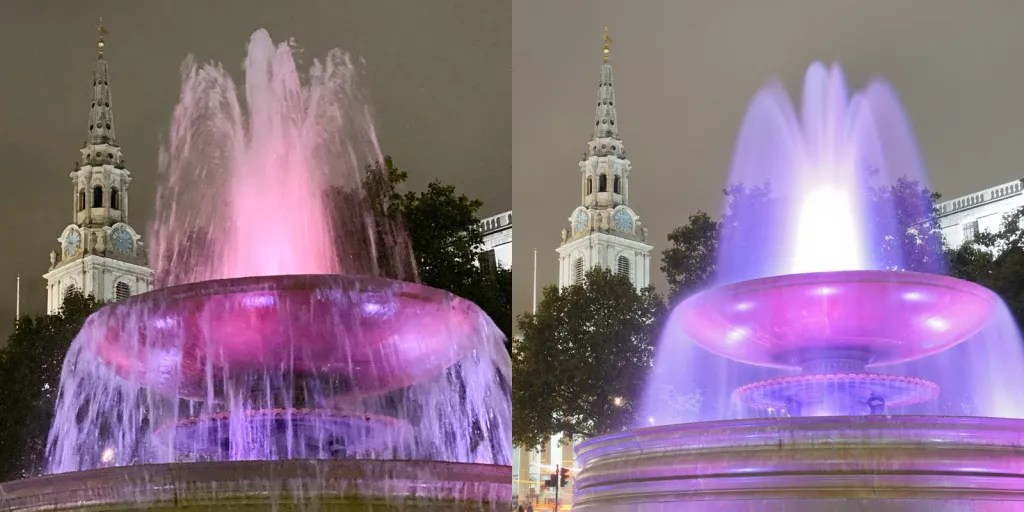
Another example is if you want to remove people from a scene. If you have people moving through a scene, because they are only captured in any one position for a fraction of the total exposure time, they effectively disappear from view. We’ll see examples of that shortly.
Long exposure photos on an iPhone require an app
With conventional cameras, you can take long exposure photos by combining a low ISO with a small aperture. The low ISO means that the sensor needs a lot of light, and the small aperture means that it doesn’t get much. The combination of the two creates conditions where you need to leave the shutter open for a long time to get the correct exposure.
A typical night-shot long exposure would be 100 ISO, f/16 or f/22, for 30 seconds.
But an iPhone doesn’t provide the control needed for this, so the only way to take long exposures is software trickery. That is, shoot a whole bunch of short-exposure photos, and overlay them. Depending on how well this is done, you can get a result pretty close to a long exposure photo.
Enter Spectre
Spectre is an app created by Lux Optics, the team behind the well-known iPhone camera app Halide.
It was first launched back in 2019, and made freemium last year. The free version limited you to three seconds, while upgrading to the paid version gives you exposures of up to 30 seconds – which is what you’ll need in most cases.
Unlike most iPhone camera apps giving access to manual controls, Spectre is extremely easy to use, with very few settings. You simply select your exposure duration (3s, 5s, 9s, 15s, or 30s) and whether light trails are on or off.
Generally, long exposure shots need you to put the camera on a tripod, but Spectre uses the iPhone’s Neural Engine to stabilise it. You’ll still need to hold it as steady as you can, but you can get great results hand-held.
Tips for holding the iPhone steady:
- Best option: Hold the phone on top of a wall, post, or similar
- Next best: Brace yourself by leaning against a wall, lamp-post, etc
- Breathe out, then hold your breath while taking the photo
All of the examples you’ll see below were completely handheld, though I am leaning against something for some of them.
Smooth water
A very common reason to want a long-exposure shot is to smooth moving water, as we saw in the Trafalgar Square fountain shot above.
But rivers also look much better in long exposures, especially at night, with lights reflected from the water. Here’s an example:
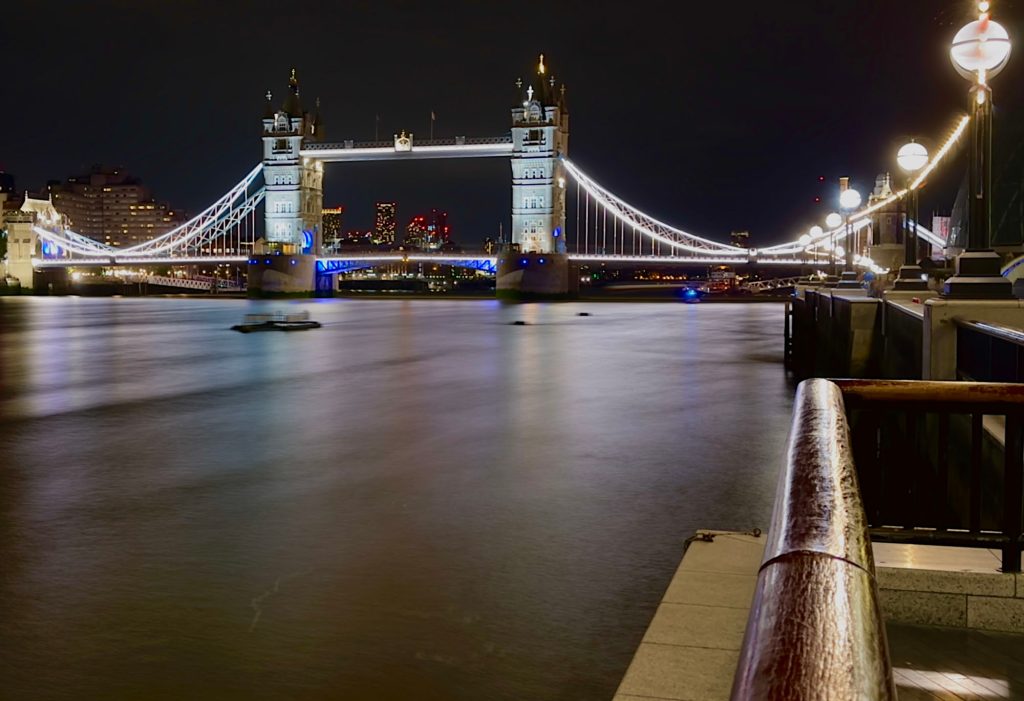
The Thames is a relatively fast-moving river, but in this shot the surface of the water looks almost ice-like, and you get beautiful reflections of the light from Tower Bridge.
Of course, it’s not perfect.
First, although iPhone night shots have become dramatically better over the years, it’s still using a small sensor, and can’t match the detail and clarity of a larger sensor. Spectre can effectively gather more light through the multiple exposures, but it’s still subject to the constraints of those individual exposures.
Second, although I’m leaning against the railing, and the Neural Engine stabilisation is really impressive, the micro-movements again show up as another source of fuzziness. It’s small, but noticeable if you view the full-size image up close.
Let’s take the example of the cover shot, above:
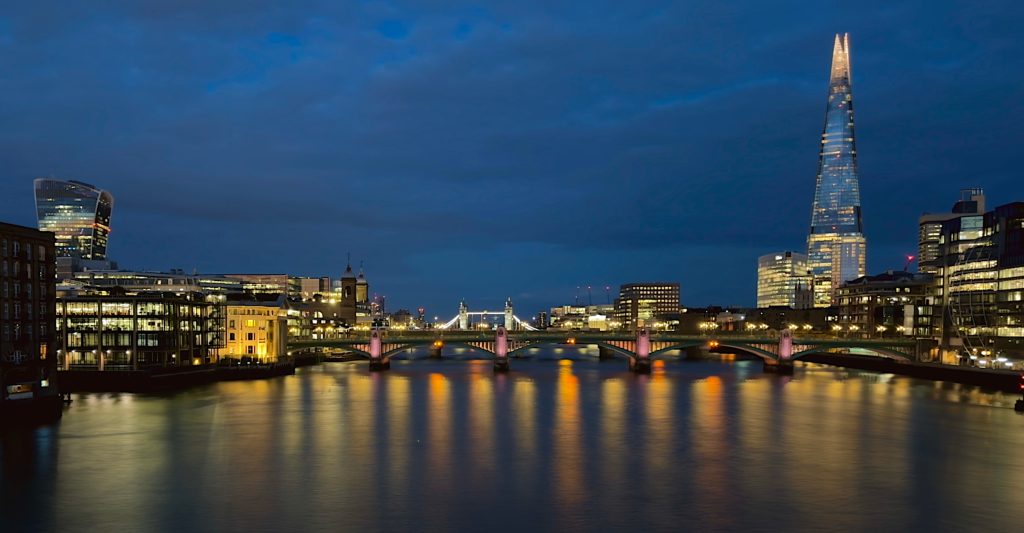
This does a great job at capturing the reflections of the colored lights from London Bridge and riverside office blocks.
Here, I would say that the artefacts I mention are more prevalent, giving a somewhat ‘blocky’ look to the photo. However, I do have to say that as an artistic effect, I rather like it! As with many things in photography, subjective tastes count for a lot.
Another shot, with the characteristic glass-like smoothness you get in water from a long exposure:
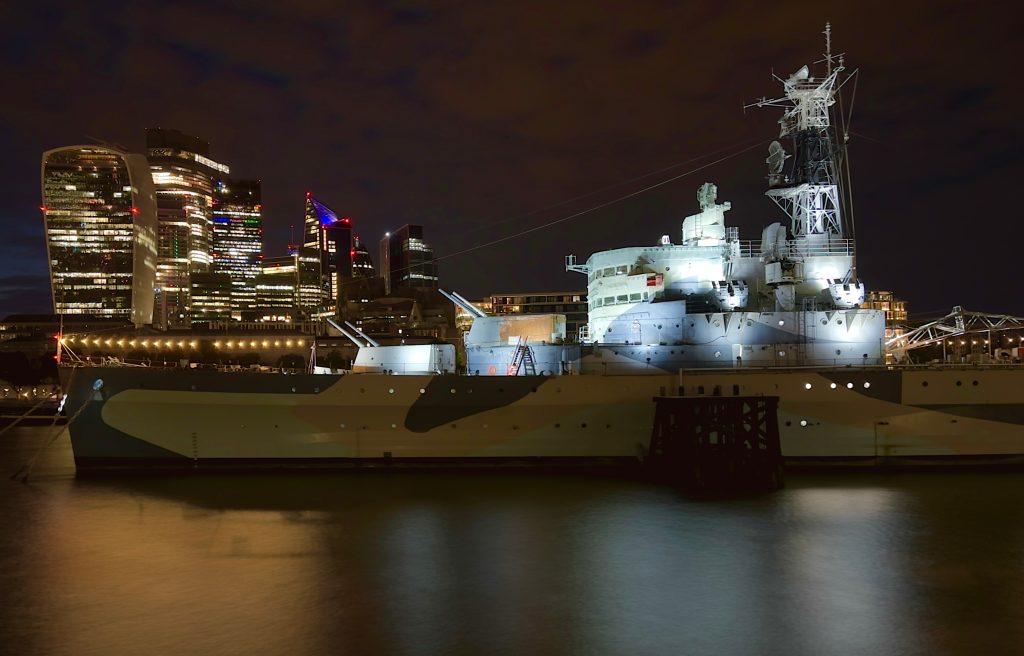
Removing people from the scene
As with any long exposure shot, if your aim is to remove people, you want to give yourself the best possible, uh, shot by waiting for a time when there aren’t many people in frame in the first place. You can’t remove whole crowds in this way.
You also really want people to be moving across the frame, rather than standing still or walking to or from the camera position.
But with these two points in mind, you can get great results:

Spot the people? Well, there was the guy in the centre foreground who annoyingly stood there the whole time – there’s nothing you can do about that other than try to out-wait them. But three other people walked through the frame, and have been rendered completely invisible. One person walked across the top of the steps, while two more walked from the posts on the left and then out the right side of the frame.
This next one was a tougher challenge, as people walked from behind me into the frame, then turned left or right. If you look very closely, there’s a little patchiness at the bottom of the shot between the blocks. But honestly, I was blown away by how good a result Spectre delivered here.

The low-light ‘blockiness’ I mentioned above is very evident in the shot below – but the people who walked through are invisible, and again, I rather like the effect.
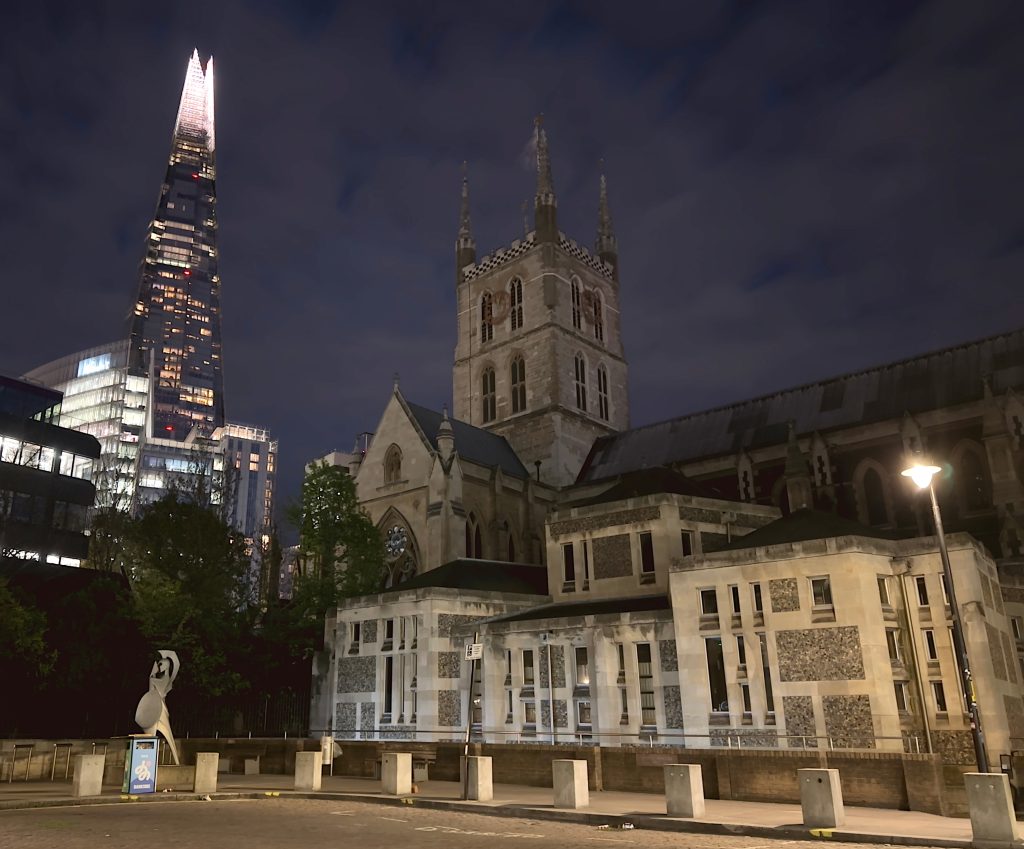
The most technically impressive result was this one, which had a steady stream of people walking across the bridge. There were people on both walkways, left and right, as well as walking up and down the ramp in front of me. As mentioned, moving directly toward or away from the camera is tougher as there is less relative movement in the frame. But Spectre performed miracles here:
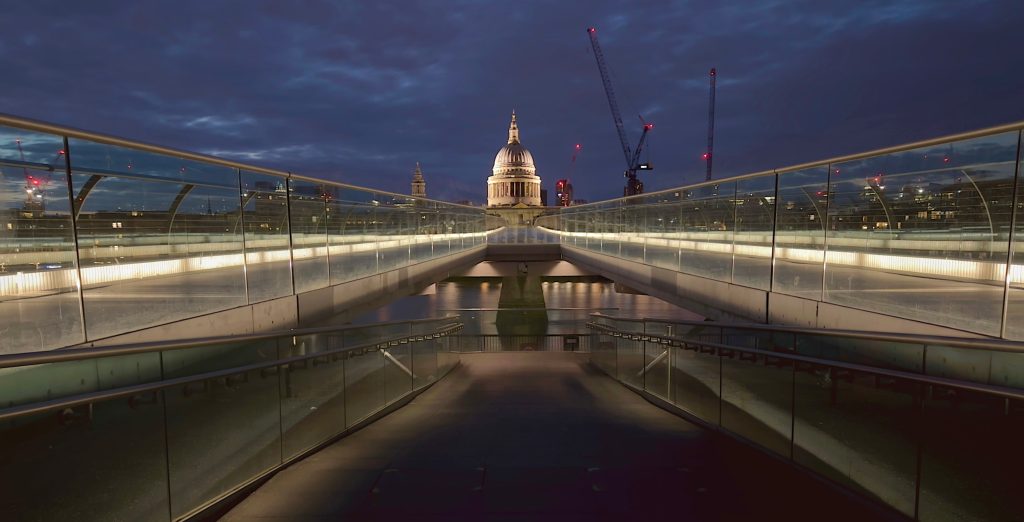
Just to show that there are limits, here’s a shot where two women walked into frame from behind me, and then stood at the lights for about 10-15 seconds of the 30-second exposure:
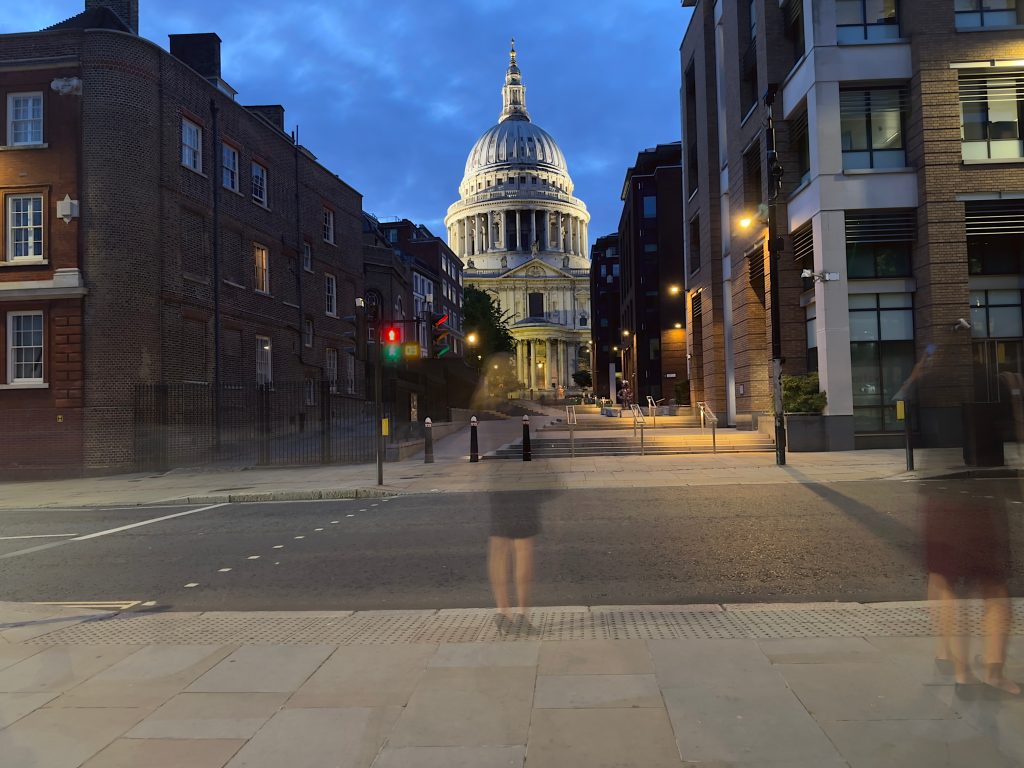
They were stationary for too long a period to be removed from the shot, instead turned into ghosts. You can see the same thing after they crossed, but to a much lesser degree because they are now walking – albeit quite slowly, and directly away from the camera:
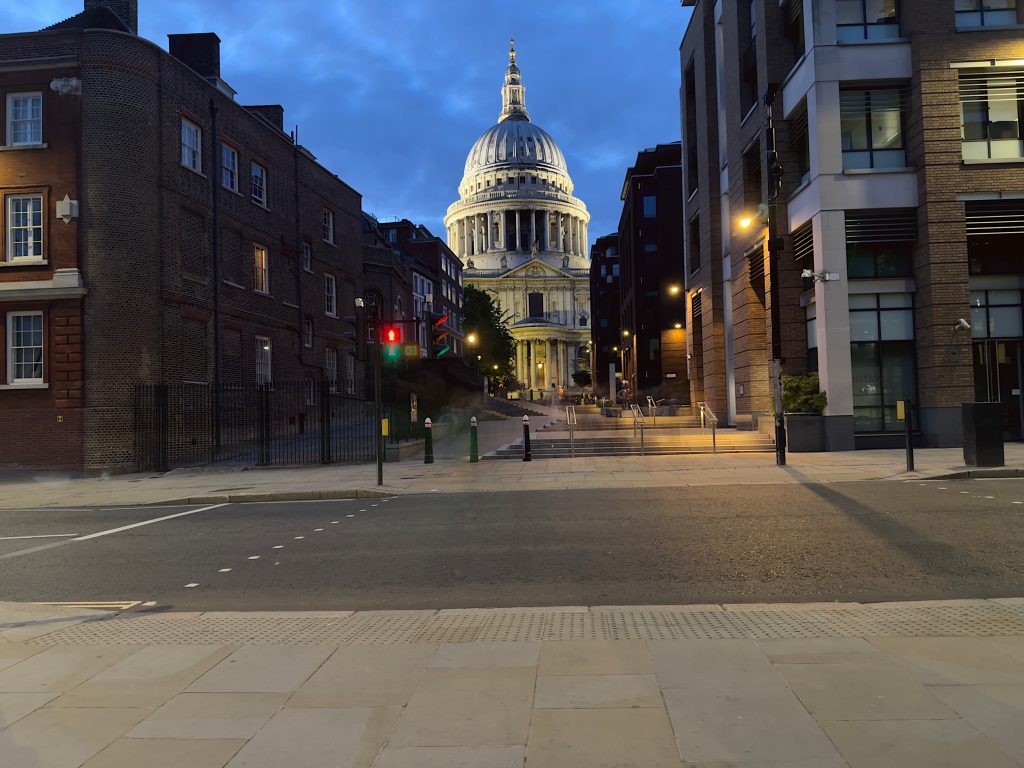
Whether this second shot would be an acceptable result would, I think, depend on the usage. You certainly couldn’t use it professionally, but as a tourist photo, I’d keep it if there weren’t an opportunity to shoot at a quieter time.
Similarly with this example, where the closer people move through the frame quickly enough to be removed, while their relative movement is very small when the reach the alleyway, where we see a mix of ghosts and general cloudiness:
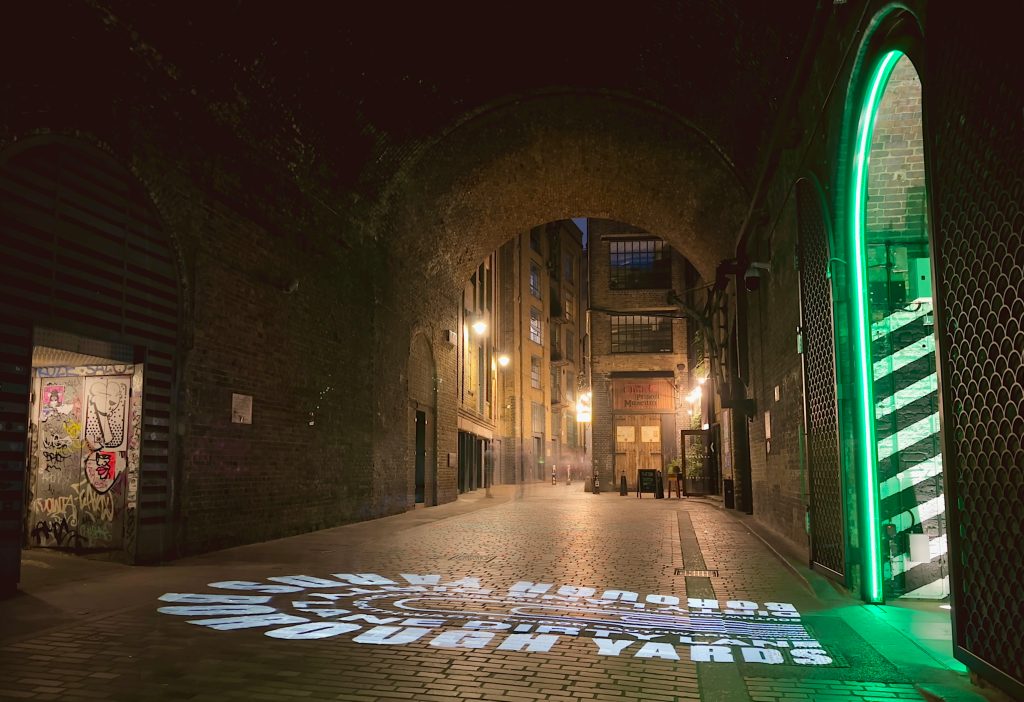
Abstracts
Finally, another use of long exposures is for fun abstract shots. I took these on a one-stop light railway journey.
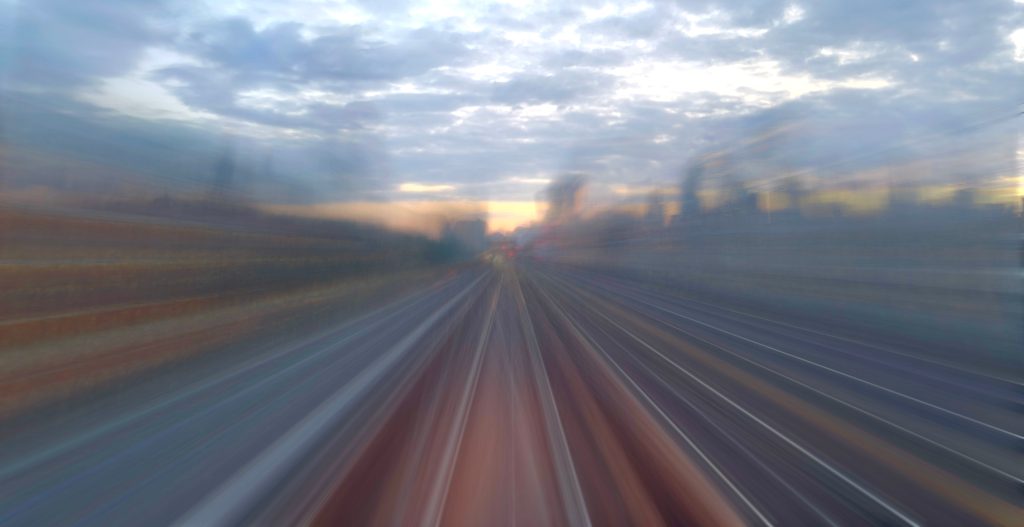


Whether this sort of thing is, well, your sort of thing will again depend on tastes, but the option is there.
Pricing and conclusions
Spectre is free, but with a three-second limit which effectively means the $4.99 one-off upgrade to Spectre Pro is essential.
Alongside shallow depth of field, long exposures have been one of the two main reasons for me to carry a standalone camera at least some of the time. Spectre doesn’t completely replace the need for that, given the mix of constraints imposed by the small sensor of the iPhone and the software limitations of the app.
However, it’s fantastic to have that capability available all the time, and the results are honestly very impressive. For five bucks, I think it’s a no-brainer to have the app on your phone for anyone who uses their iPhone for travel photography, and it’s a pretty handy option to have more generally.
You can download the app here.
FTC: We use income earning auto affiliate links. More.





Comments